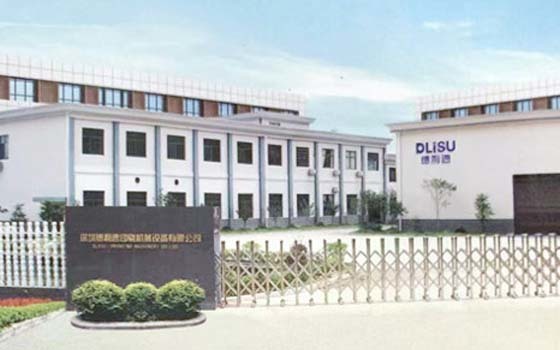
Interpretation of Printing and Glazing Process
Time:
2021-09-15
The traditional film covering process has gone through many years, and we are no longer unfamiliar with its process. Compared with the glazing process, there are similarities and differences between the two. The so-called printing glazing is to use the field printing plate or the graphic printing plate to print one or two times of varnish on the surface of the copy that has completed the graphic printing, so as to obtain a bright and transparent film on the surface of the print. Common glazing methods include oily glazing, water-based glazing and UV glazing. Printing glazing can enhance the light resistance of the ink, increase the ability of the ink layer to prevent heat and moisture, and play a role in protecting the impression, beautifying the product, and replacing the covering film. Printing glazing is cheap and simple compared with film covering. It can be both full plate glazing and partial glazing. WeChat pictures_ 20180919105220.jpg environment protection First of all, from a purely environmental perspective, water and UV are in line with the trend. Because there are two layers of pollution, white pollution and plastic pollution. The cover after water-based glazing and UV glazing can be directly recycled without any further treatment. In addition, from the perspective of the market application environment, in addition to food, drug and cosmetic packaging, foreign live parts, even those electronic products that do not directly contact the human body, are increasingly required to use the non polluting printing method of glazing because the corporate culture advocates environmental protection and takes pride in it. With the economic exchange and cooperation of various countries, a considerable number of printing and packaging enterprises in the coastal and inland areas have external single business, while western countries have high requirements for environmental protection, and pollution-free water-based glazing and UV glazing have developed quite mature. Especially in food packaging, drug packaging and other fields, Europe has set strict standards, and the survival space of film covering and oily glazing that do not meet the standards has been very small. The traditional film covering process will not completely fade out of the market because it can increase the thickness and toughness of the paper and its good waterproof property. However, in the face of the enhancement of global environmental awareness, products are required to be recycled or biodegraded, and the film covering process must strive to improve the pollution of products, working environment and the external environment to have a greater living space. Cost and efficiency According to the actual application, the cost of lamination is higher than the cost of glazing. In the industry, the quotation of glazing generally does not exceed half of the film covering, so the traditional film covering has no advantage in cost. The speed of traditional laminating machine is 30 m/min~75 m/min, while the current online glazing equipment can fully match the speed of the printing machine, and the stability of the glazing quality has been greatly improved. Without considering the specific requirements of customers, the glazing process is more economical in terms of efficiency. It is worth noting that the multiple use of transfer film technology in recent two years has broken through the boundaries of traditional film covering, and has shown initial advantages in the application of related color boxes and cigarette packs. Characteristics of varnish There are many kinds of varnish, but the commonly used varnish can be roughly divided into three categories: oily varnish, water-based varnish and UV varnish. According to the practical application trend of varnish and the improvement of environmental protection requirements, the use of oily varnish will be reduced day by day, while the application space of water-based varnish and UV varnish is very broad. This section mainly introduces water-based varnish and UV varnish. water base varnish The water-based varnish is mainly composed of water-soluble resin and water dispersible resin. The water-based varnish is non-toxic and tasteless, which eliminates the harm to human body and the pollution to the environment. It has the characteristics of fast drying speed, good film transparency, stable performance, wide equipment adaptability, good abrasion resistance and flatness of the polished surface, wide post press processing adaptability, good heat sealing performance, safe and reliable use, convenient storage and transportation, and is increasingly popular in food, medicine Tobacco carton packaging printing enterprises attach importance to.
Printing glazing can enhance the light resistance of the ink, increase the ability of the ink layer to prevent heat and moisture, and play a role in protecting the impression, beautifying the product, and replacing the covering film. Printing glazing is cheap and simple compared with film covering. It can be both full plate glazing and partial glazing.
WeChat pictures_ 20180919105220.jpg
environment protection
First of all, from a purely environmental perspective, water and UV are in line with the trend. Because there are two layers of pollution, white pollution and plastic pollution. The cover after water-based glazing and UV glazing can be directly recycled without any further treatment.
In addition, from the perspective of the market application environment, in addition to food, drug and cosmetic packaging, foreign live parts, even those electronic products that do not directly contact the human body, are increasingly required to use the non polluting printing method of glazing because the corporate culture advocates environmental protection and takes pride in it.
With the economic exchange and cooperation of various countries, a considerable number of printing and packaging enterprises in the coastal and inland areas have external single business, while western countries have high requirements for environmental protection, and pollution-free water-based glazing and UV glazing have developed quite mature. Especially in food packaging, drug packaging and other fields, Europe has set strict standards, and the survival space of film covering and oily glazing that do not meet the standards has been very small.
The traditional film covering process will not completely fade out of the market because it can increase the thickness and toughness of the paper and its good waterproof property. However, in the face of the enhancement of global environmental awareness, products are required to be recycled or biodegraded, and the film covering process must strive to improve the pollution of products, working environment and the external environment to have a greater living space.
Cost and efficiency
According to the actual application, the cost of lamination is higher than the cost of glazing. In the industry, the quotation of glazing generally does not exceed half of the film covering, so the traditional film covering has no advantage in cost.
The speed of traditional laminating machine is 30 m/min~75 m/min, while the current online glazing equipment can fully match the speed of the printing machine, and the stability of the glazing quality has been greatly improved. Without considering the specific requirements of customers, the glazing process is more economical in terms of efficiency.
It is worth noting that the multiple use of transfer film technology in recent two years has broken through the boundaries of traditional film covering, and has shown initial advantages in the application of related color boxes and cigarette packs.
Characteristics of varnish
There are many kinds of varnish, but the commonly used varnish can be roughly divided into three categories: oily varnish, water-based varnish and UV varnish. According to the practical application trend of varnish and the improvement of environmental protection requirements, the use of oily varnish will be reduced day by day, while the application space of water-based varnish and UV varnish is very broad. This section mainly introduces water-based varnish and UV varnish.
water base varnish
The water-based varnish is mainly composed of water-soluble resin and water dispersible resin. The water-based varnish is non-toxic and tasteless, which eliminates the harm to human body and the pollution to the environment. It has the characteristics of fast drying speed, good film transparency, stable performance, wide equipment adaptability, good abrasion resistance and flatness of the polished surface, wide post press processing adaptability, good heat sealing performance, safe and reliable use, convenient storage and transportation, and is increasingly popular in food, medicine Tobacco carton packaging printing enterprises attach importance to.
Website

Shenzhen Dlisu Printing Machinery Co., Ltd.
Shenzhen Address: 803, Shenbao Building, No. 219, Zhenming Road, Gongming Street, Guangming New District, Shenzhen
Shantou Address: Wanji Industrial Zone (Second Branch Road), Longhu District, Shantou City
Tel: 86-754-87224116
Phone: 86-137-5047-4043
86-138-2327-5809 86-159-1664-0313
Fax: 86-754-87224116
QQ: 815887412
E-Mail:dlisu888@163.com











